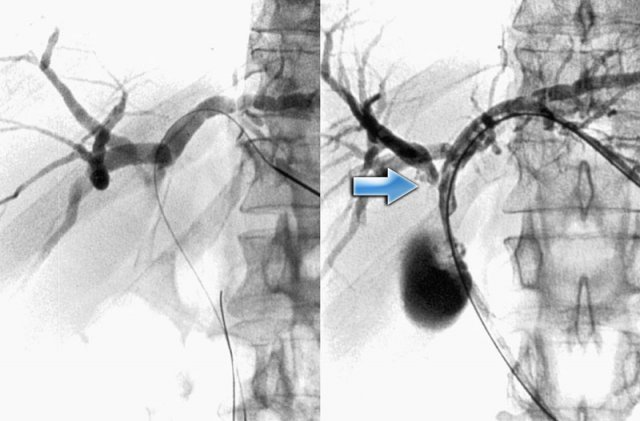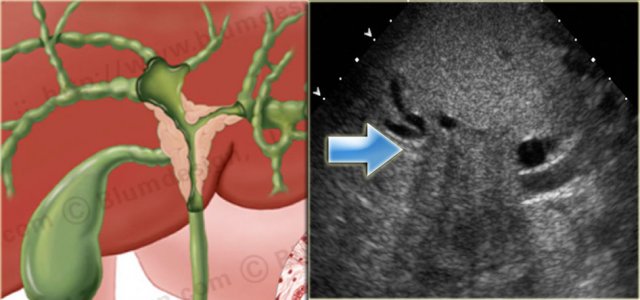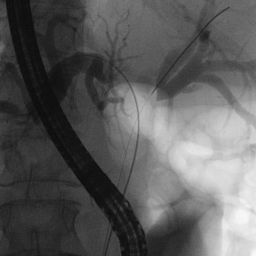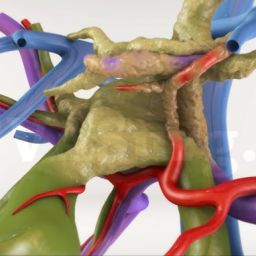
The Common Symptoms of Klatskin Tumor
1. Jaundice (Yellowing of the Skin and Eyes)
Jaundice is one of the most common and telling symptoms of Klatskin tumors. It occurs when the liver is unable to excrete bile properly, leading to the accumulation of bilirubin in the blood. Bilirubin is a yellow substance formed from the breakdown of red blood cells, and when its levels rise in the bloodstream, it results in yellowing of the skin, sclera (the white part of the eyes), and mucous membranes.
Why does jaundice occur in Klatskin tumors?
The tumor obstructs the bile duct, preventing bile from flowing from the liver to the intestines. As bile backs up into the liver, bilirubin cannot be processed and excreted as it should. The resulting increase in bilirubin levels causes the characteristic yellowing of the skin and eyes.
Early signs of jaundice include:
- Yellowing of the skin, particularly the face and chest
- Yellowing of the whites of the eyes (scleral icterus)
- Darkened urine (often described as tea-colored)
- Pale stools or clay-colored stools
Jaundice is one of the most noticeable symptoms and often prompts individuals to seek medical attention.
2. Abdominal Pain
Abdominal pain is another common symptom that may be caused by a Klatskin tumor. The pain can vary in intensity and location, depending on the tumor’s size, location, and whether it causes bile duct obstruction or liver inflammation.
Types of pain associated with Klatskin tumors:

- Upper right abdominal pain: Klatskin tumors are typically located near the junction of the right and left bile ducts in the liver. The pain may radiate from the upper right side of the abdomen, often described as dull, constant, and ache-like.
- Colicky pain: When bile ducts are partially obstructed, patients may experience intermittent sharp pain, especially after meals. This type of pain can occur when the liver and gallbladder are trying to process bile but face difficulty due to the tumor.
- Pain due to liver enlargement: As the tumor grows, it may cause the liver to become enlarged (hepatomegaly). This can lead to a sensation of fullness or discomfort in the upper abdomen.
It’s important to differentiate the pain associated with Klatskin tumors from other gastrointestinal conditions, such as gallstones or liver disease. The pain may become more severe as the tumor grows, and it can also be accompanied by other symptoms, including nausea and vomiting.
3. Fatigue and Weakness
Patients with Klatskin tumors often experience extreme fatigue and general weakness, especially as the disease progresses. This symptom is common in many cancer-related conditions and is linked to several factors, including:
- Liver dysfunction: As the liver’s ability to process waste products, produce bile, and maintain energy balance decreases, individuals may feel physically drained and exhausted.
- Nutrient malabsorption: Bile plays a crucial role in digesting fats. When bile flow is obstructed, the body may not properly absorb nutrients from food, leading to malnutrition and weight loss, which exacerbates feelings of weakness.
- Increased metabolic demands: Cancer cells can demand more energy from the body, contributing to feelings of fatigue. The body’s response to tumor growth, as well as the stress of managing the disease, can contribute to a general sense of tiredness.
Patients may find it difficult to carry out everyday activities due to the lack of energy, and the feeling of exhaustion may worsen over time.
4. Unexplained Weight Loss
Unexplained weight loss is another troubling symptom that may indicate the presence of a Klatskin tumor. This weight loss can occur for several reasons:

- Poor appetite: The tumor can cause discomfort, nausea, or a feeling of fullness, all of which reduce the desire to eat.
- Malabsorption: As bile flow is blocked, the body may struggle to absorb fats and fat-soluble vitamins from food, leading to nutritional deficiencies and weight loss.
- Cancer-induced cachexia: This condition, which is often seen in advanced cancer cases, leads to severe muscle wasting and weight loss. It occurs due to the body’s increased energy expenditure and the metabolic changes induced by the tumor.
Even if the patient does not actively try to lose weight, they may experience significant reductions in body mass, which can be concerning for both patients and healthcare providers.
5. Itchy Skin (Pruritus)
Itchy skin, or pruritus, is another common symptom in individuals with Klatskin tumors. This itching occurs due to the accumulation of bile acids in the bloodstream, a condition known as cholestasis. When the bile ducts are obstructed, bile salts are not excreted as they should be, and they build up in the liver and enter the bloodstream. This buildup triggers the sensation of intense itching, which can be particularly severe on the palms of the hands, soles of the feet, and all over the body.
Pruritus can significantly affect a patient’s quality of life, leading to discomfort, difficulty sleeping, and skin irritation. While pruritus can be managed with medications such as antihistamines and cholestyramine, the underlying cause of the bile duct obstruction must be treated to provide long-term relief.
6. Dark Urine and Pale Stools
As bile flow is blocked, it leads to an imbalance in the processing and excretion of bilirubin. Dark urine and pale stools are common signs of this issue:
- Dark urine occurs when excess bilirubin is filtered by the kidneys and excreted in the urine, giving it a dark, tea-colored appearance.
- Pale stools result when bile is unable to reach the intestines to aid in digestion. Without bile, stools lose their normal brown color and appear light or clay-colored.
These symptoms, though not exclusive to Klatskin tumors, can help in diagnosing the condition when combined with other signs such as jaundice and abdominal pain.


